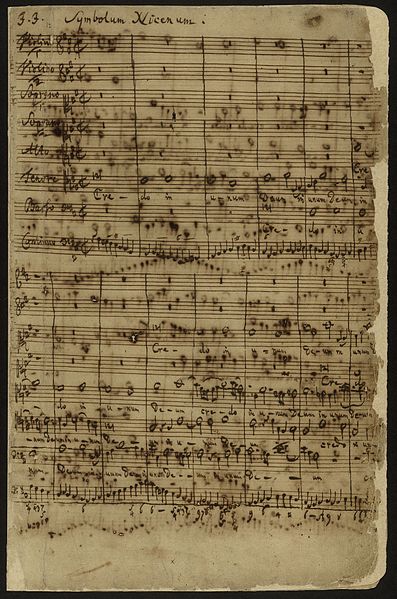In Christian liturgy, the credo is the Nicene-Constantinopolitan Creed – or its shorter version, the Apostles' Creed – in the Mass, either as a prayer, a spoken text, or sung as Gregorian chant or other musical settings of the Mass.
An example: the autograph first page of the Symbolum Nicenum (the Credo) from Johann Sebastian Bach's Mass in B minor
Credo III in The Liber Usualis
The Nicene Creed, also called the Creed of Constantinople, is the defining statement of belief of Nicene or mainstream Christianity and in those Christian denominations that adhere to it. The original Nicene Creed was first adopted at the First Council of Nicaea in 325. In 381, it was amended at the First Council of Constantinople. The amended form is also referred to as the Nicene Creed, or the Niceno-Constantinopolitan Creed for disambiguation.
Icon depicting Constantine I, accompanied by the bishops of the First Council of Nicaea (325), holding the Niceno-Constantinopolitan Creed of 381. First line of main text in Greek: Πιστεύω εἰς ἕνα Θ[εό]ν, πατέρα παντοκράτορα, ποιητὴν οὐρανοῦ κ[αὶ] γῆς,. Translation: "I believe in one God, the Father the Almighty, Maker of heaven and earth."
The oldest extant manuscript of the Nicene Creed, dated to the 6th century
17th-century Russian icon illustrating the articles of the creed



